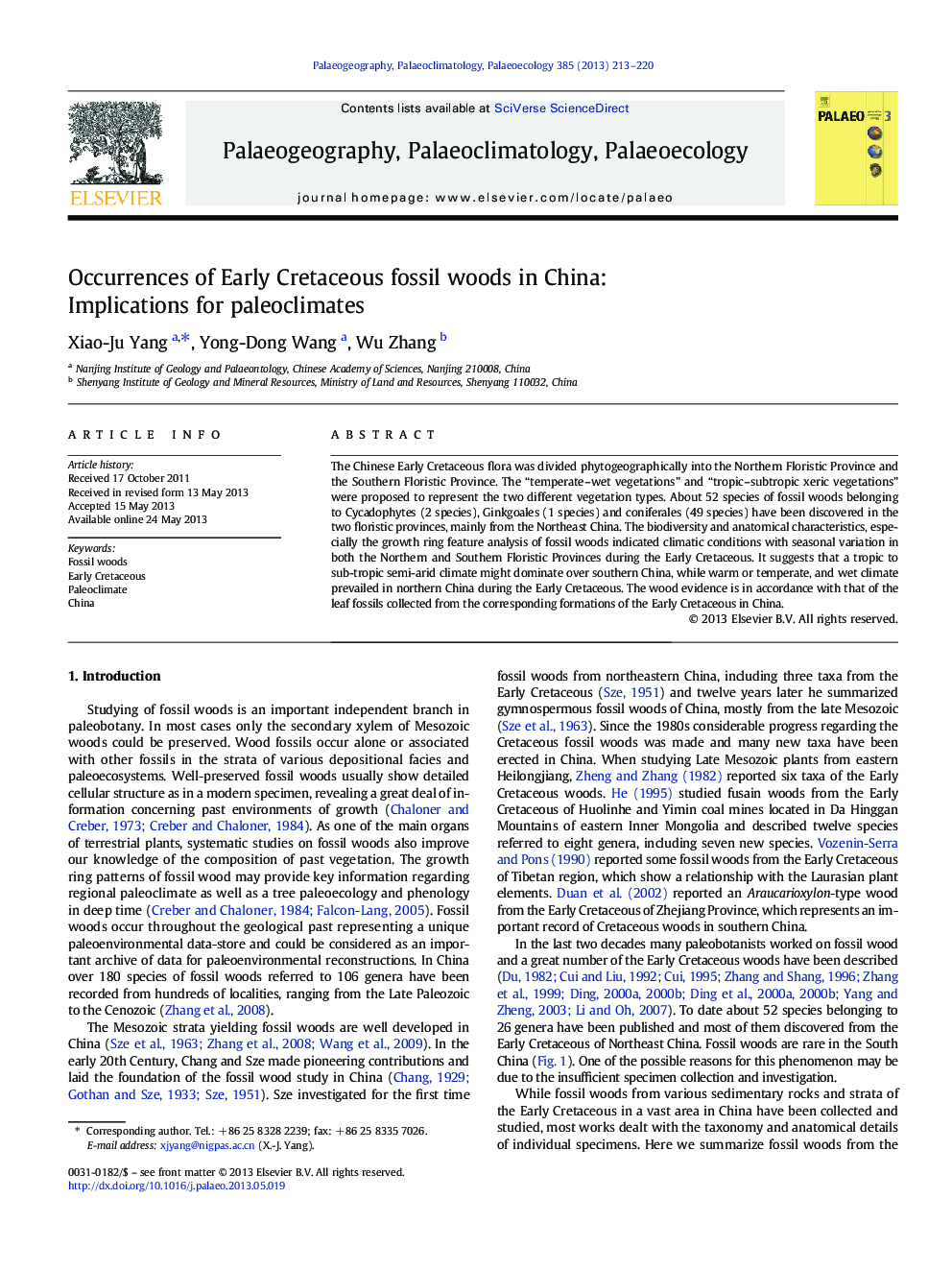| Article ID | Journal | Published Year | Pages | File Type |
|---|---|---|---|---|
| 6350282 | Palaeogeography, Palaeoclimatology, Palaeoecology | 2013 | 8 Pages |
Abstract
The Chinese Early Cretaceous flora was divided phytogeographically into the Northern Floristic Province and the Southern Floristic Province. The “temperate-wet vegetations” and “tropic-subtropic xeric vegetations” were proposed to represent the two different vegetation types. About 52 species of fossil woods belonging to Cycadophytes (2 species), Ginkgoales (1 species) and coniferales (49 species) have been discovered in the two floristic provinces, mainly from the Northeast China. The biodiversity and anatomical characteristics, especially the growth ring feature analysis of fossil woods indicated climatic conditions with seasonal variation in both the Northern and Southern Floristic Provinces during the Early Cretaceous. It suggests that a tropic to sub-tropic semi-arid climate might dominate over southern China, while warm or temperate, and wet climate prevailed in northern China during the Early Cretaceous. The wood evidence is in accordance with that of the leaf fossils collected from the corresponding formations of the Early Cretaceous in China.
Related Topics
Physical Sciences and Engineering
Earth and Planetary Sciences
Earth-Surface Processes
Authors
Xiao-Ju Yang, Yong-Dong Wang, Wu Zhang,
